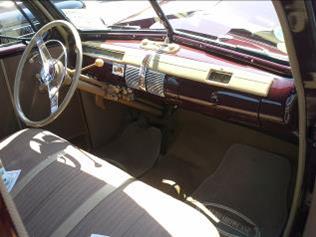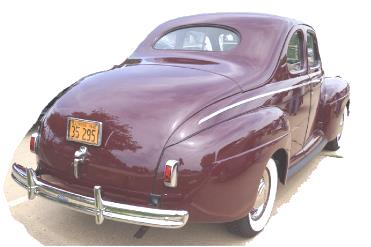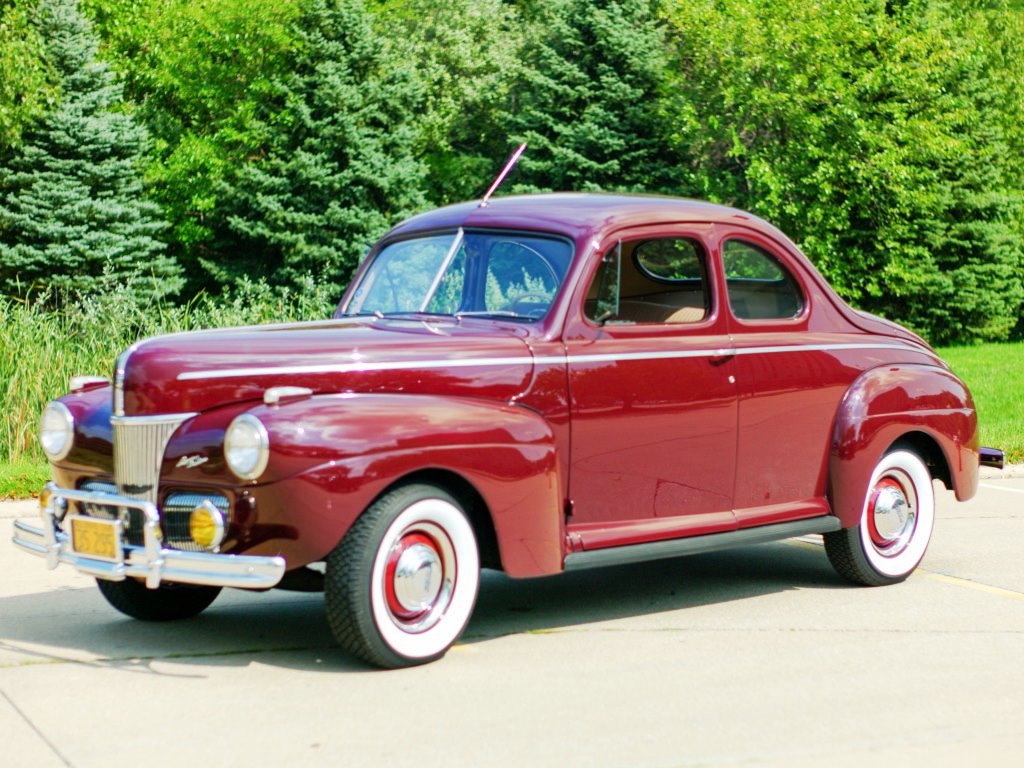Early Ford V-8s over the Years
1941 Ford Super Deluxe Coupe
By Gary
Osborne and Joe Serritella
The new 1941 Fords
were introduced to the public amid much fanfare in September 1940. Over 6,000
dealerships all around the country were welcoming prospective customers to take
a look at how much the new Fords had improved. The cars had been advertised as
really a whole new automobile that any informed person would truly enjoy owning.
There were so many
improvements that Ford Motor Company could honestly call it a brand new car. The
larger body sat on a frame that was made significantly more rigid. Of course, it
was attached with 14 newly designed rubber mounts to cushion the ride. Between
the newly designed shocks, springs, and body mounts, the car offered a very
comfortable ride.
But, let’s not leave
out the improvements made to the interiors. The new deeply padded seat cushions
were also much wider than previous years. The gauges and dash knobs were
arranged for good viewing through the steering wheel. This car was meant to be
driven for the comfort and pleasure of the motoring public.

In this two-part
series I decided to look at two models so that you can see the styling
differences: a Super Deluxe Business Coupe and a Super Deluxe Convertible. In
this first installment let’s look at the Coupe, owned by Joe and Delice
Serritella.
The first thing to
notice about this Coupe is the larger body and how much more visibility one has
due to the larger glass area. This car has been fully restored and painted the
correct Mayfair Maroon. Joe has
kindly written some history of the car up through his ownership, so I will let
him tell it: “Lloyd Duzell had been
helping me check out cars for about a year when he heard of a car for sale from
an old colleague named Gale Braunsdorf.

“Lloyd suggested we
check out the car, a 1941 Ford Super Deluxe Business Coupe.
On our way to see the car, Lloyd remarked that Gale’s restoration
standards were like his own - no Bondo body filler, and no lead except where
factory applied. Upon arriving, one look at the 1941 Ford Coupe affirmed Lloyd’s
assessment of Gale’s skill - the car was gorgeous!
Chrome, paint and sheet metal were near perfect and the interior appeared
to be 100% LeBaron-Bonney.
“Gale mentioned that
in addition to what was visual the car had a new 59A engine, a reconditioned
radiator and steering gearbox. He then took out an album which showed the extent
of the body and paint work. Hood, trunk, doors and fenders were removed. The
pieces were then stripped of old paint, sheet metal straightened as needed, acid
etched primed, surfaced and refinished with DuPont Centari acrylic enamel. In
addition, it appeared that many hours of hand sanding and polishing were
invested to produce so fine a finish. The restoration was completed in the early
2000’s and the car was not driven much since. It had only been driven to a few
local shows and was in a Chicago based movie.
At the time he mentioned the car had been in storage for about 5 years,
and he wasn’t too sure how well it would run with the old gasoline in the tank.
There was no attempt to start the car. He mentioned what he thought the car was
worth. I thanked him and mentioned I would get back to him if I had further
interest. A week or so later Lloyd mentioned that Gale had taken the car off the
market.
“About six months
later I found out the car was back on the market. An appointment was made for me
to fully inspect and drive the car. I was pleasantly surprised on how tight and
rattle free the car drove. Gail and I settled on a price and I purchased the car
in September 2010.
“In driving the car
home (50 plus miles) three problems were noted. First, the gears would clash
going from second to third, indicating the synchronizers were worn; second, all
lights were very dim indicating a lot of resistance in the electrical system;
and third there was an exhaust leak. The rest of the car appeared OK with a
quiet motor, good oil pressure and a firm brake pedal.
“Although I was
anxious to take the car on its first club tour, common sense dictated me to do
the transmission first. The procedure of dropping the rear end and pulling it
back in order to remove the transmission was really easy as there were no rust
issues to deal with in removing the various fasteners. Once the transmission was
disassembled, I found no chips in the engagement tangs – pilot shaft, 2nd gear
or synchronizer drum. The sharp edges of the tangs were just a little bit
rounded due to normal wear. All that was needed was a sanitary cleaning of the
housing and all parts; and replacement of the synchronizer rings, gaskets and
seals. I decided to deal with the
second problem (dim lights) later.
“The third problem
(exhaust leak) was found to be a rusted-out heat exchanger, which is part of the
factory installed “Hot Air” heater.
Since the part is no longer produced, I had little choice but to repair the heat
exchanger. The rusted-out rear section was cut away and a replacement was made
of a weldment made out of schedule 40 tubing and an old header adapter.
“On our first tour an
elusive fuel starvation problem reared its ugly head. The condition resulted in
many non-scheduled stops along the way.
I must again thank the half dozen or so club members who helped me with
parts and advice. Ultimately the solution to the problem was removal of a
floating mass of gelatin like goo that had formed in the gas tank.
“Since the purchase
of my 1941 Ford Super Deluxe Coupe, it has been driven 6000 miles over a nine
year period of fun filled tours, shows and a few unplanned repairs. Some of the
other work performed either to make the car factory correct or more roadworthy
were: fuel line, fuel pump and carburetor replacement; distributor overhaul;
distributor coil and voltage regulator replacement; generator overhaul; and a
replacement of the drive shaft center support bearing.”
I am sure many of you
have seen Joe’s beautiful car at our Club events. (Next month in our December
issue I will write about our member Ed Crane’s
1941 Ford Super Deluxe Convertible, and the differences between the two
body styles.)
